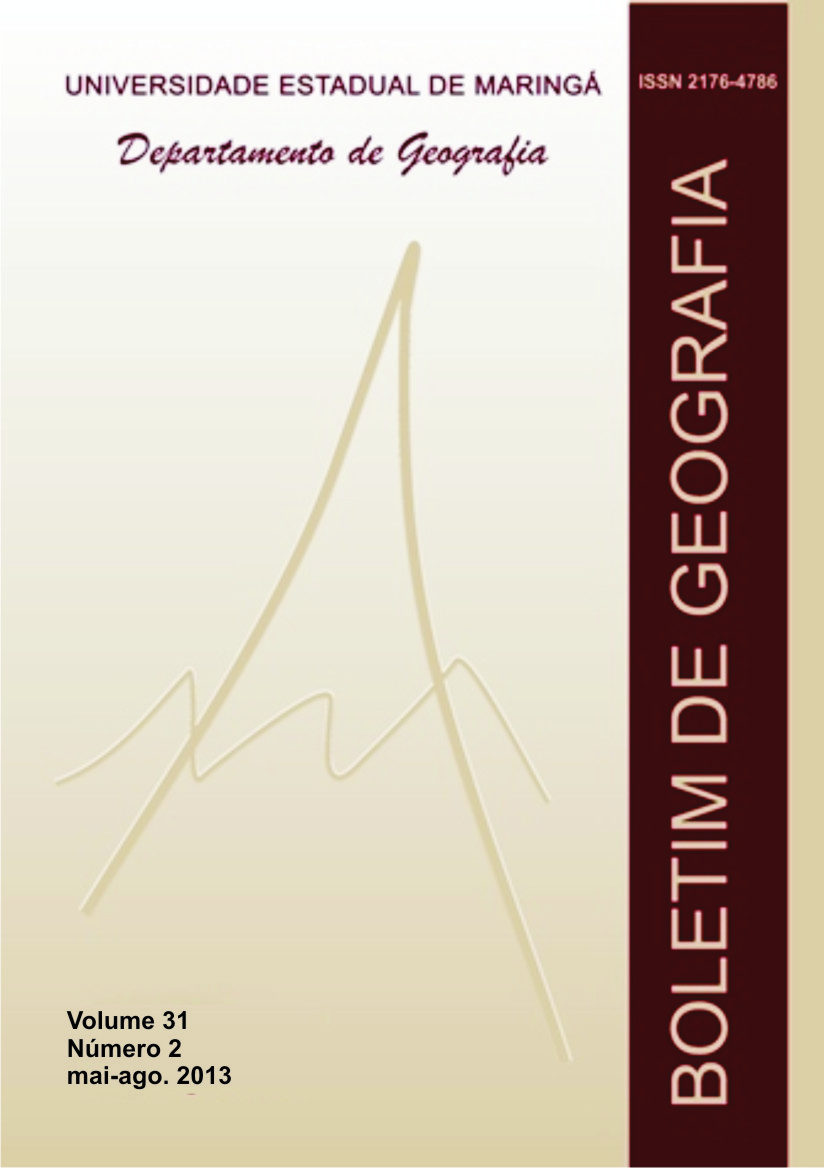<b>O uso do território e os circuitos da economia urbana: analisando a zona norte de Natal-RN</b> - doi: 10.4025/bolgeogr.v31i2.17098
Resumen
O presente trabalho teve como objetivo analisar a Região Administrativa Norte de Natal, tomando como referência analítica a teoria dos circuitos da economia urbana, proposta teórica do autor Milton Santos. Esta teoria interpreta a economia urbana dos países subdesenvolvidos por meio do reconhecimento da existência de dois circuitos econômicos, o circuito inferior e o circuito superior. Estes são frutos da existência de uma significativa parcela da população vivendo de atividades ocasionais ou com salário muito baixo, em detrimento de uma minoria com altos salários. Cria-se, então, na cidade uma divisão entre os sujeitos que têm acesso aos bens e aos serviços de forma permanente, oferecidos pelo mercado, e aqueles que não têm esse acesso, mesmo sendo portadores das mesmas necessidades. Logo, objetivamos estudar os circuitos da economia urbana a partir da complementaridade e concorrência existentes entre eles, ressaltando as transformações na dinâmica socioeconômica da escala empírica analisada. Dessa forma, mostramos como as atividades econômicas de ambos os circuitos se instalaram na Zona Norte de Natal, seus nexos e influências na configuração territorial. Para tanto, apontamos como essa região administrativa passou a ser efetivamente usada – desde a instalação do Distrito Industrial de Natal e dos conjuntos habitacionais que foram criados, amparados pelo Sistema Financeiro de Habitação (SFH) – além de se observar como, posteriormente, esse território passou a ser alvo de interesses dos agentes hegemônicos e não hegemônicos pelo comércio, serviços, construção civil e mercado imobiliário.Descargas
La descarga de datos todavía no está disponible.
Publicado
2012-10-09
Cómo citar
MEDEIROS, T. B. DE; AZEVEDO, F. F. DE. <b>O uso do território e os circuitos da economia urbana: analisando a zona norte de Natal-RN</b> - doi: 10.4025/bolgeogr.v31i2.17098. Boletim de Geografia, v. 31, n. 2, p. 37-55, 9 oct. 2012.
Número
Sección
Artigos científicos
O Boletim de Geografia está licenciado através da Creative Commons Atribuição 4.0 Internacional (CC BY 4.0).
Autores que realizam submissões ao Boletim de Geografia concordam com os sequintes termos:
- Autores retêm todos os direitos autorais e concedem à Revista direitos exclusivos da primeira publicação, com o artigo licenciado sob os termos da Creative Commons Atribuição 4.0 Internacional (CC BY 4.0).
- Após a publicação, fica permitido ao autor a republicação em qualquer outros meios de divulgação, desde que mencionada a fonte original.












